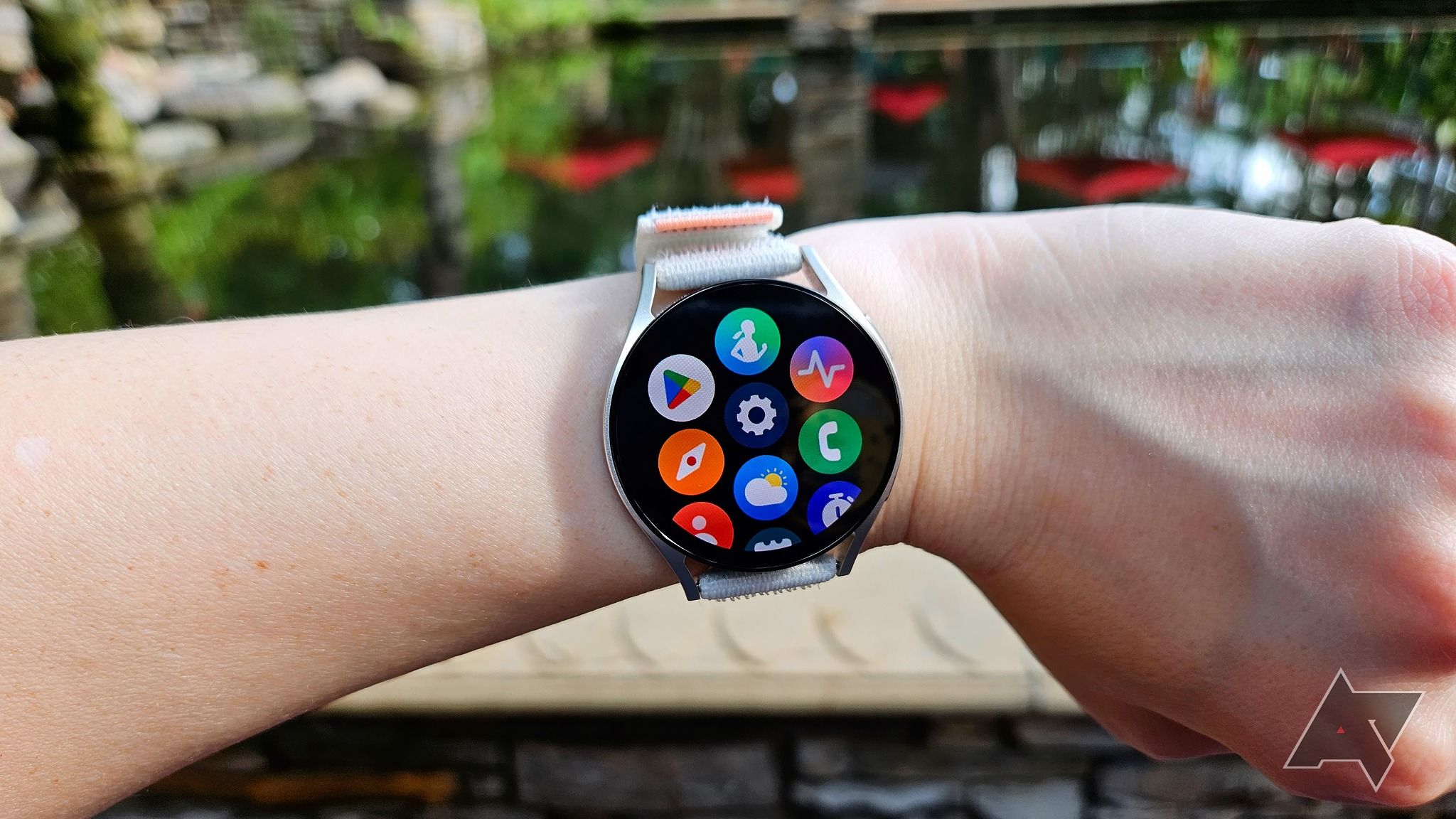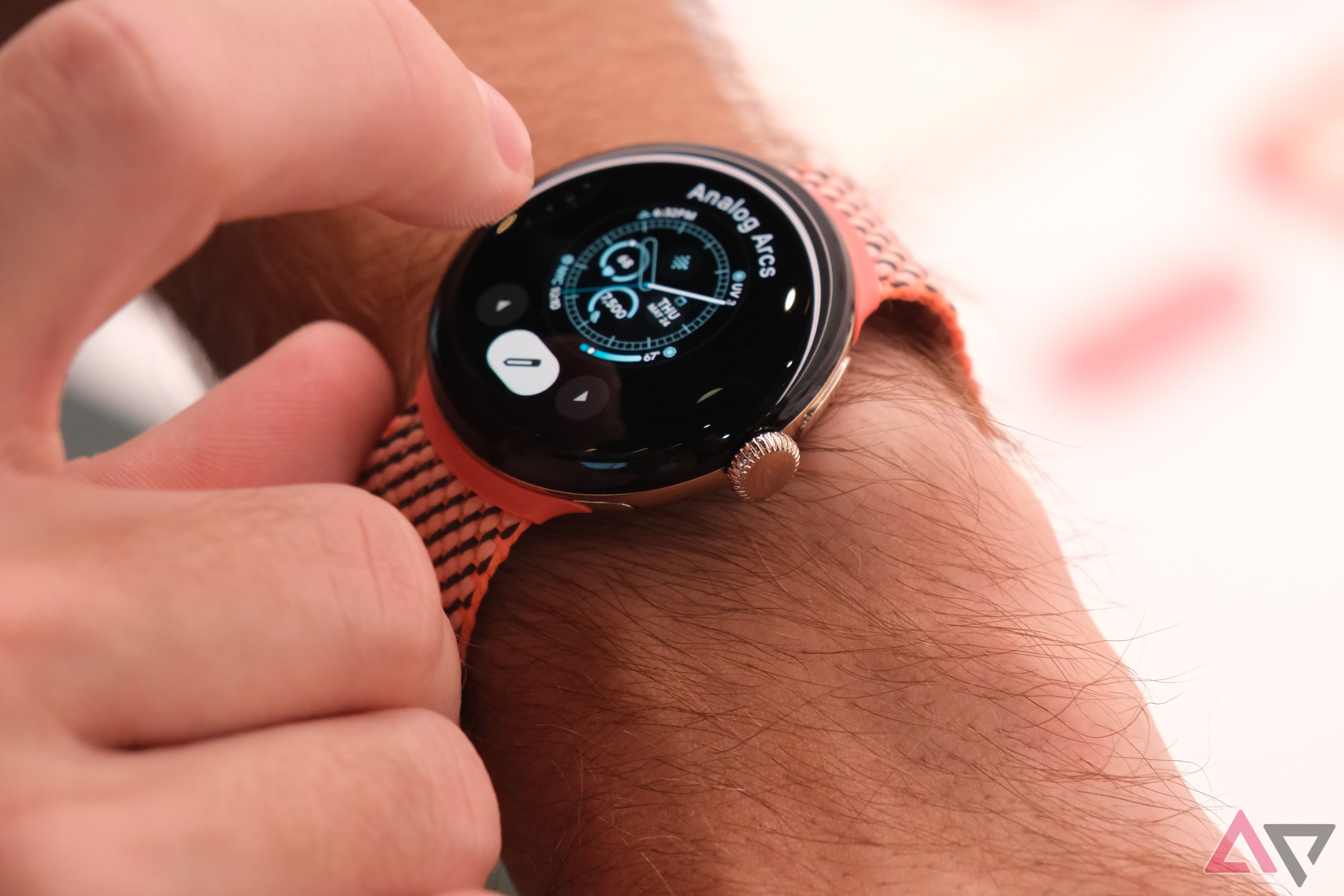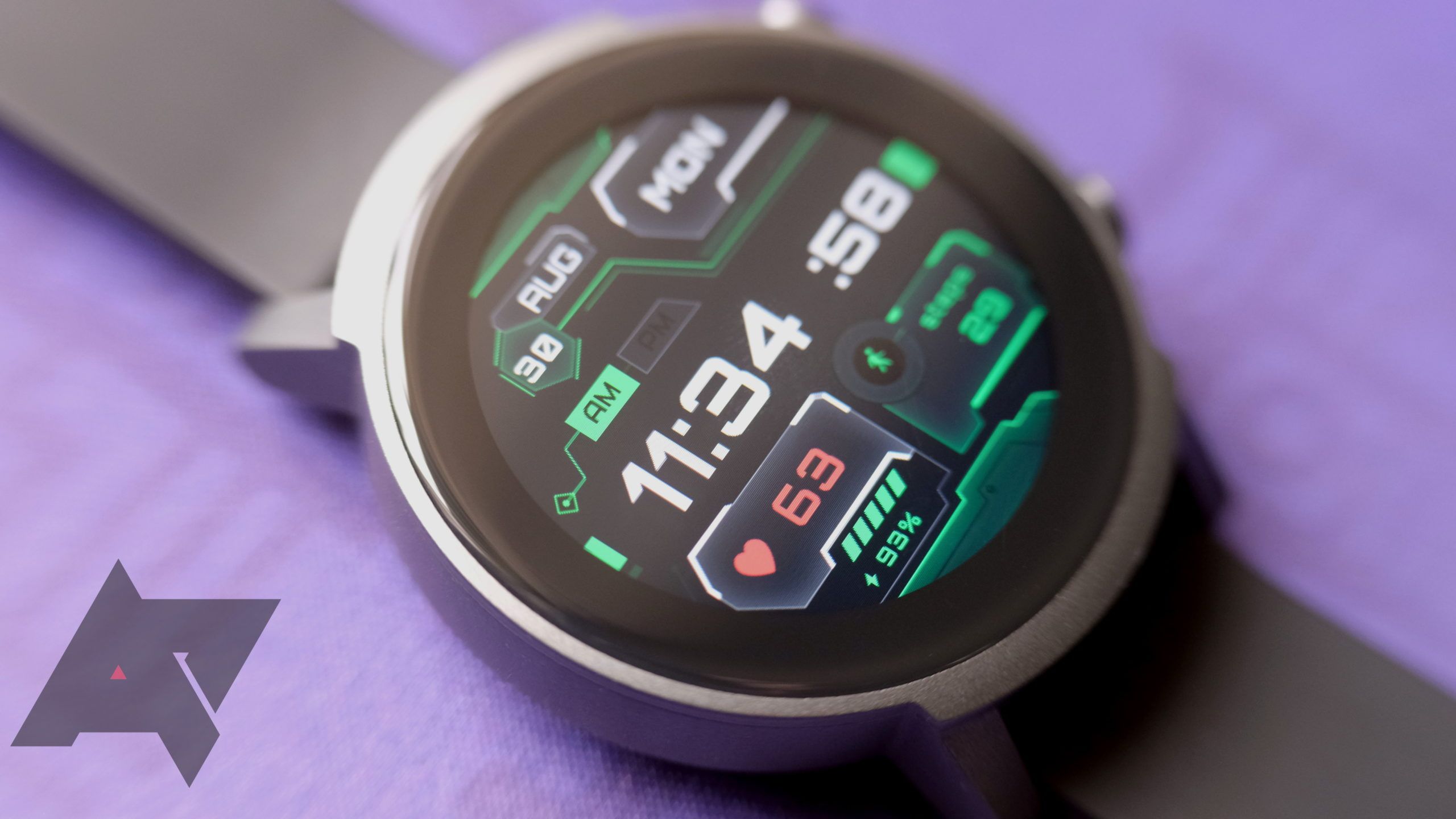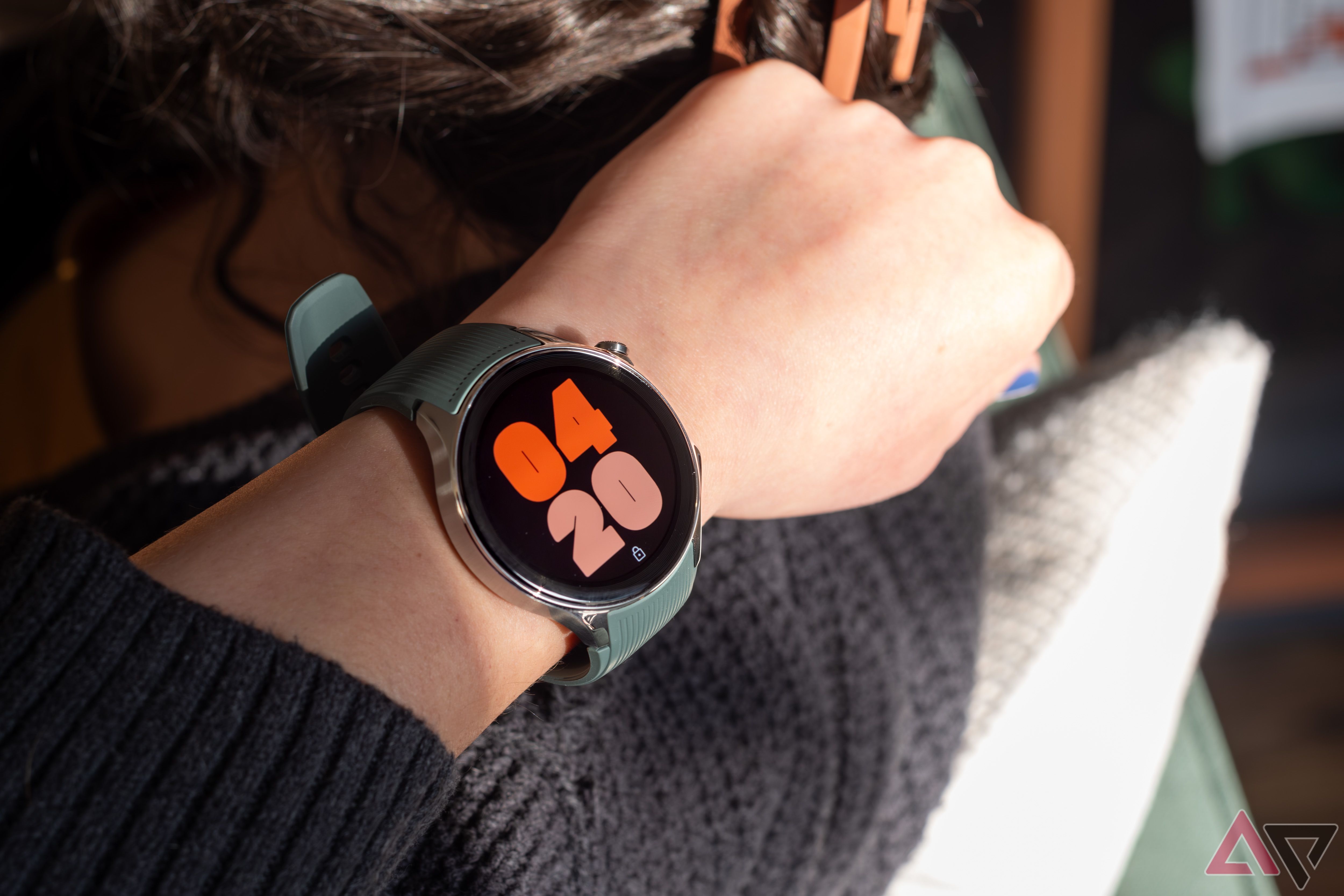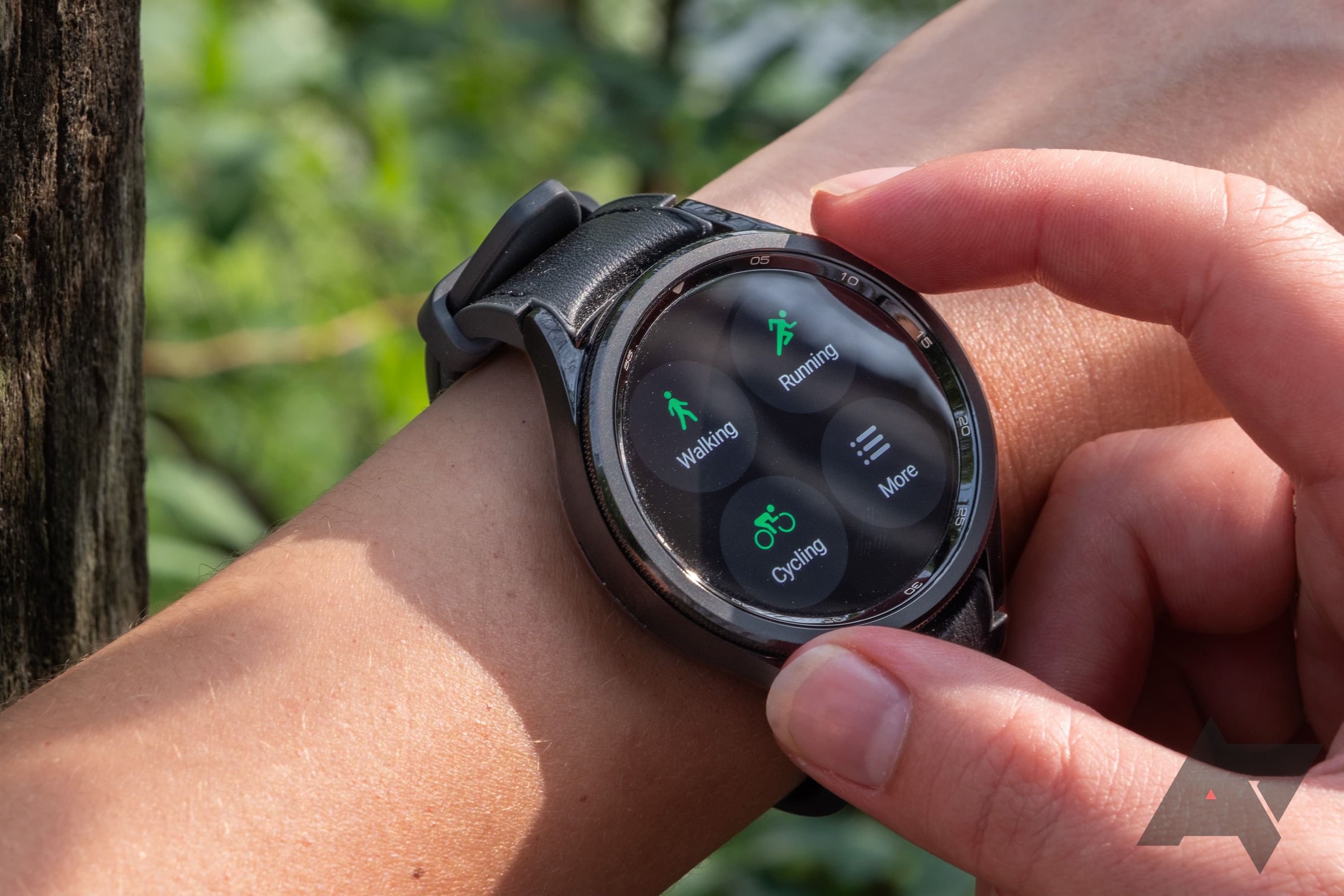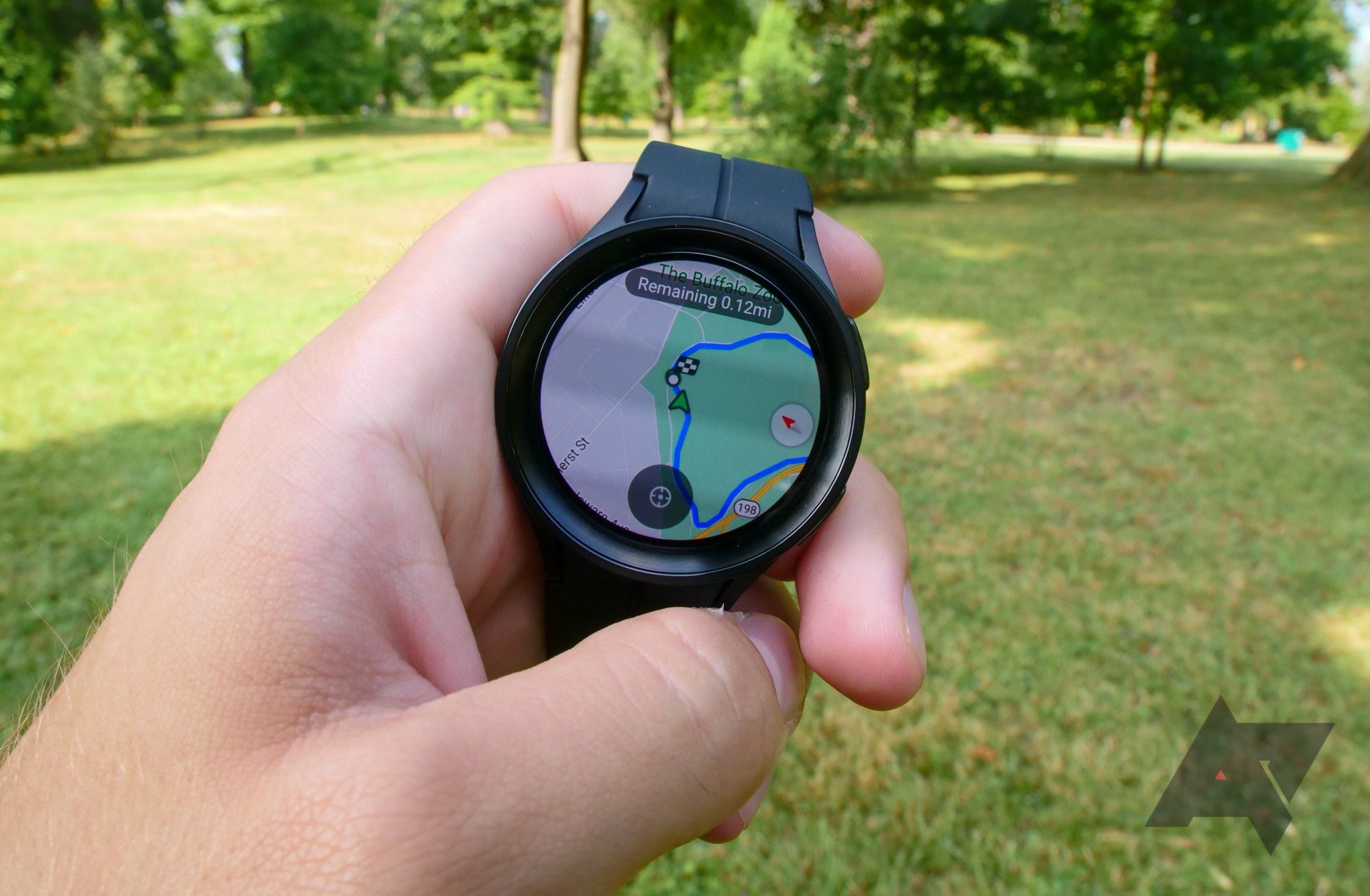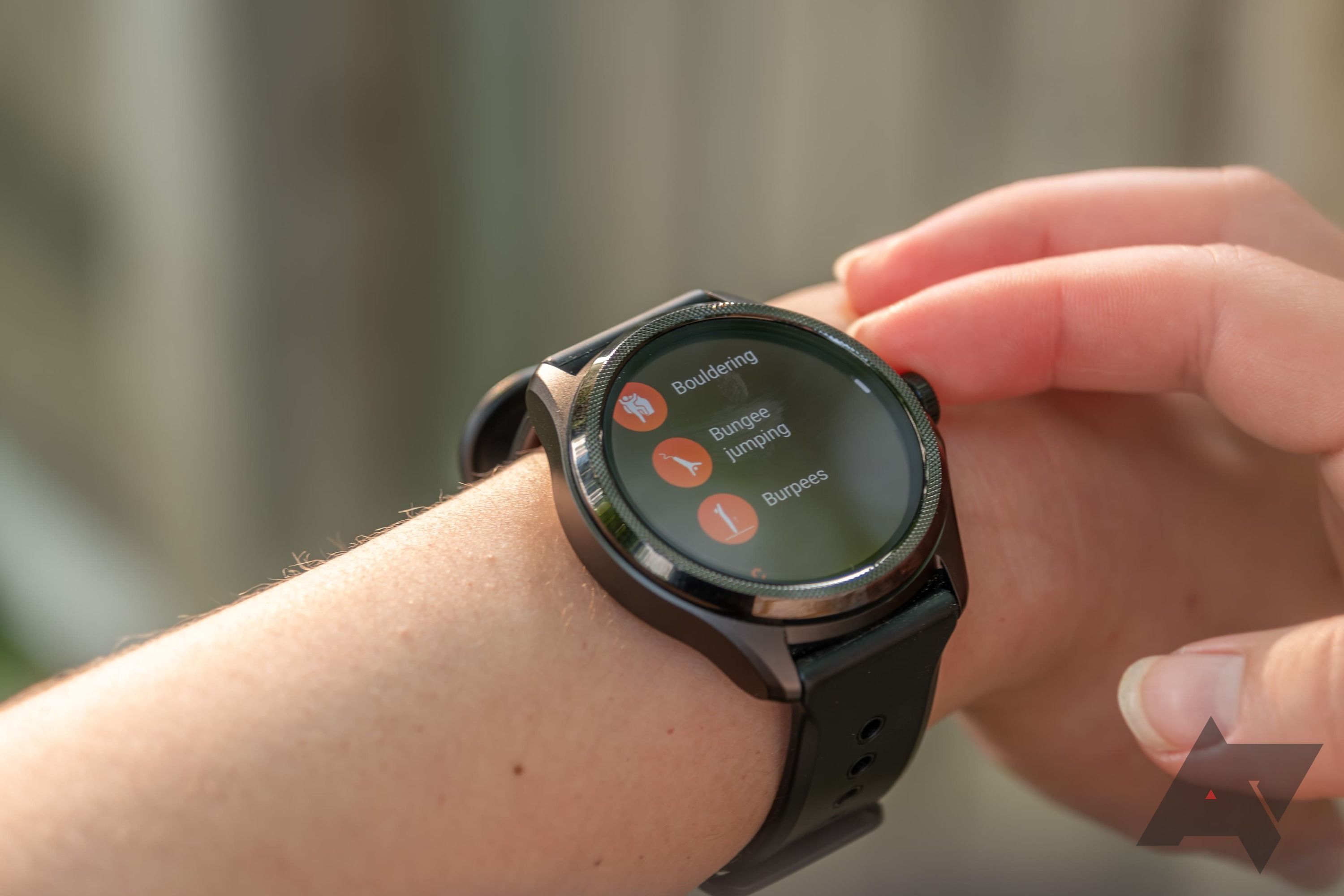There are a wide range of smartwatches that work with Android phones, but not all of them run on the same software platforms. Wear OS has come a long way from previous glitches and Google’s indifference to its current evolution as a viable wearable operating system, opening things up to a range of models running Wear OS 4 today.
The list isn’t quite as long as it may have been before, owing to Fossil’s departure from the smartwatch category, but that doesn’t negate the quality options available.
Put Wear OS to work with one of these smartwatches
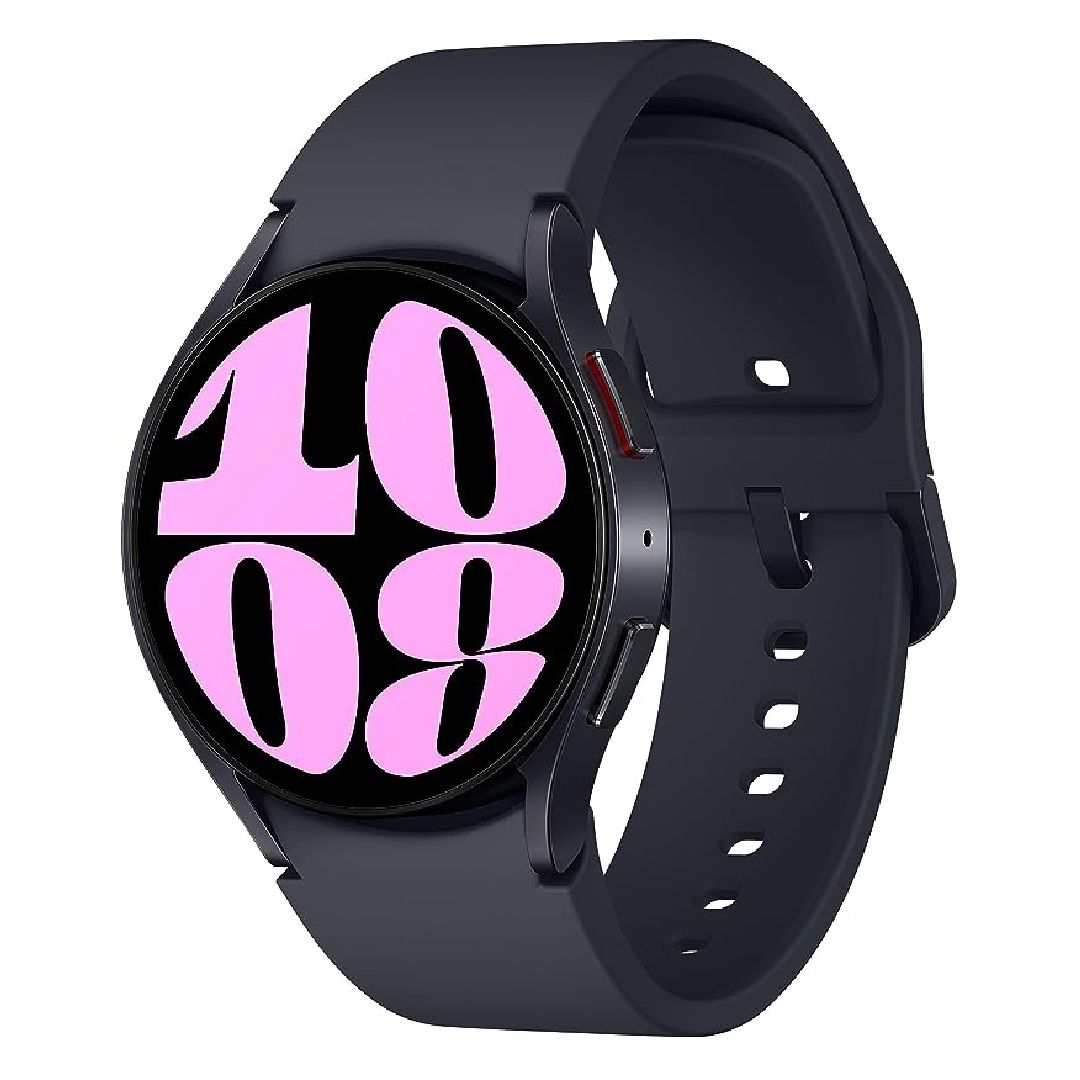
Samsung Galaxy Watch 6
Best of both worlds
The Samsung Galaxy Watch 6 is one of the deepest Wear OS smartwatches you can put on your wrist. It combines the depth and functionality of Wear OS 4 with the unique apps and features Samsung offers, making for a solid wearable that does a lot of things right.
- Bright, vibrant display
- Excellent Wear OS performance
- Solid phone integration in various respects
- Not a big upgrade from previous gen
- Some features exlusive to Samsung phones
The Samsung Galaxy Watch 6 is a compromise device in the right mold. It’s not going to be quite as premium as the Galaxy Watch 6 Classic, nor as “stock” Wear OS as the Pixel Watch 2, but it is arguably sportier than those two, and comes in two sizes — 40mm and 44mm — to accommodate more wrists. You lose out on the physical rotating bezel the Galaxy Watch 6 Classic offers, though you end up with a smaller body that could feel less cumbersome during activity or while sleeping.
Ever since Samsung adopted Wear OS, it’s found ways to blend in its own apps, features, and settings into the OS. Each iteration continues to improve upon the foundation, as in how a newer chipset and more memory helps the software run smoother than before. There are no major surprises here from the previous Galaxy Watch 5 to this one, though there is a brighter touchscreen and better strap design that latches on the wrist with a single click.
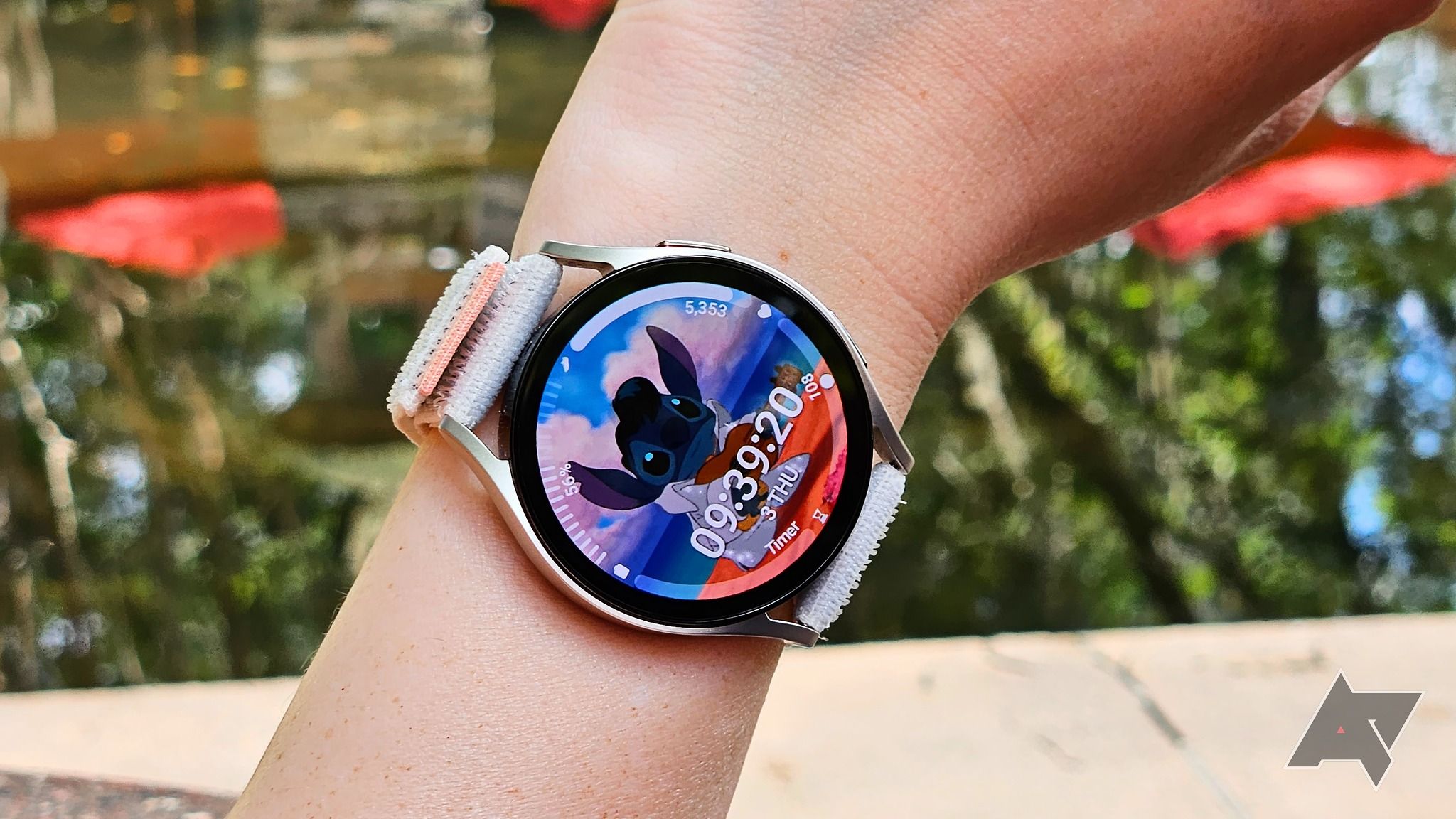
Samsung Galaxy Watch 6 review: Bright but never bold
Call it boring, but it’s still the best Android smartwatch, hands down
There are dozens of exercises to track, plus health and sleep metrics to keep tabs on as well. If you have a Samsung phone, you can take advantage of the ECG (electrocardiogram) and BPM (blood pressure monitor), the latter of which is available in some countries but not others. Battery life also holds up well, regularly hitting 36-48 hours per charge.
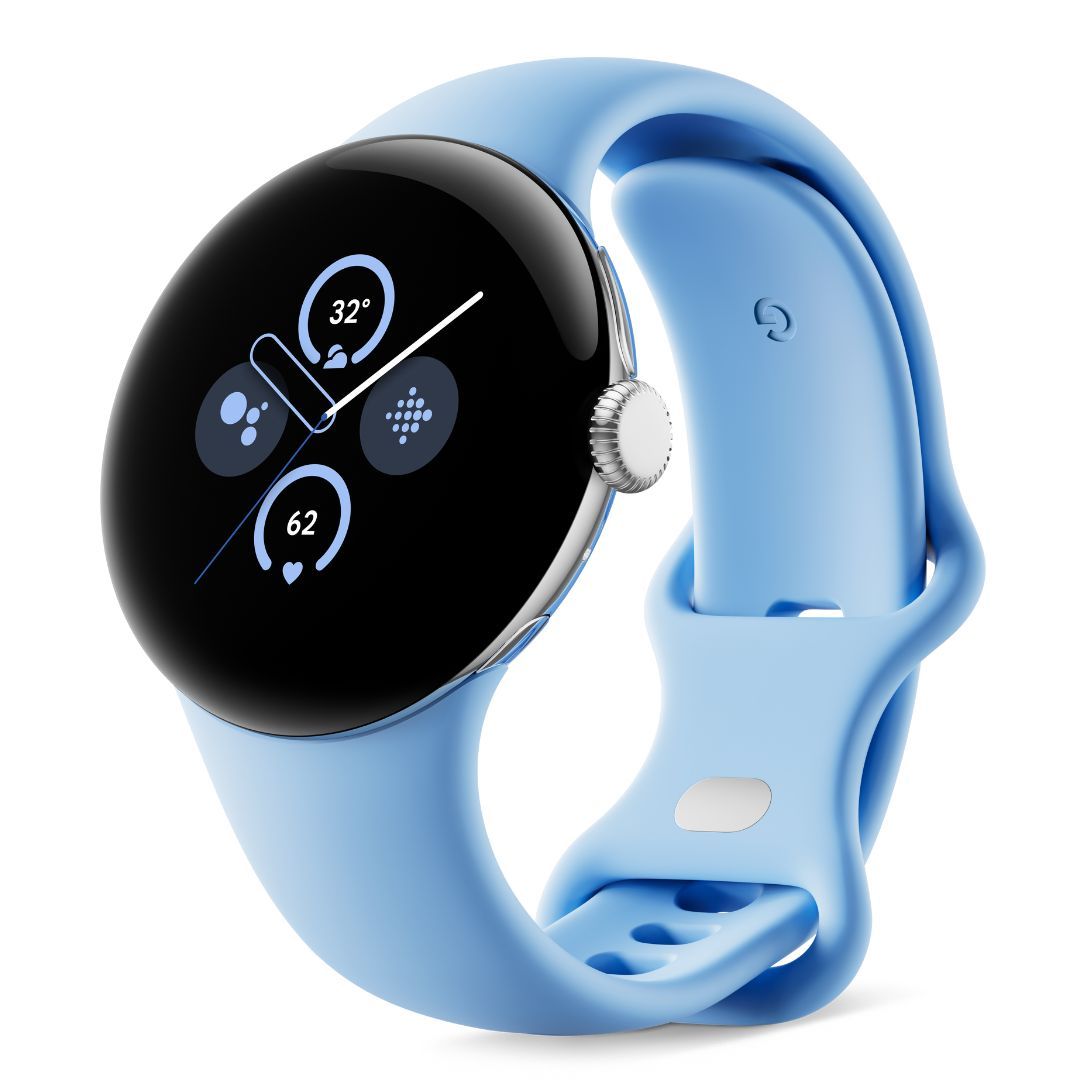
Google Pixel Watch 2
An attractive choice
The Google Pixel Watch 2 may hold a slight advantage because it’s a Google product running on a Google operating system. Wear OS on the Pixel Watch 2 feels more refined, largely because of the hardware and functional improvements the company put into this sequel.
- Improved hardware and functionality
- Fitbit tracking integrates well
- Better battery life
- Display isn’t as bright as others
- Missing some advanced health tracking features
It would be easy to assume the Pixel Watch 2 has an inside edge with Wear OS because it’s a Google smartwatch, but that’s not necessarily true. It only comes in one 41mm size and looks very much like a clone of the previous model. A redesigned digital crown for smoother scrolling and improved hardware under the hood help push this watch to more of what we would’ve liked to see in the original. The screen is nice, though not as bright as what Samsung offers with the Galaxy Watch 6 lineup.
The biggest change Wear OS 4 brings to all smartwatches running it is the ability to transfer a watch from one phone to another without having to reset it first. You may feel a tighter integration if you’re rocking a Pixel phone, but access to Gmail, Wallet, Calendar, and Assistant isn’t exclusive to Google’s phones.
What is, at least as far as Wear OS goes, is the Fitbit integration owing to Google’s acquisition of that brand, letting you tracking health and fitness metrics using that familiar platform. You can still use the Pixel Watch app to manage general settings or the Fitbit app to manage all the tracking features, thereby splitting the roles, much like the Galaxy Wearable and Samsung Health apps respectively do on Samsung watches.
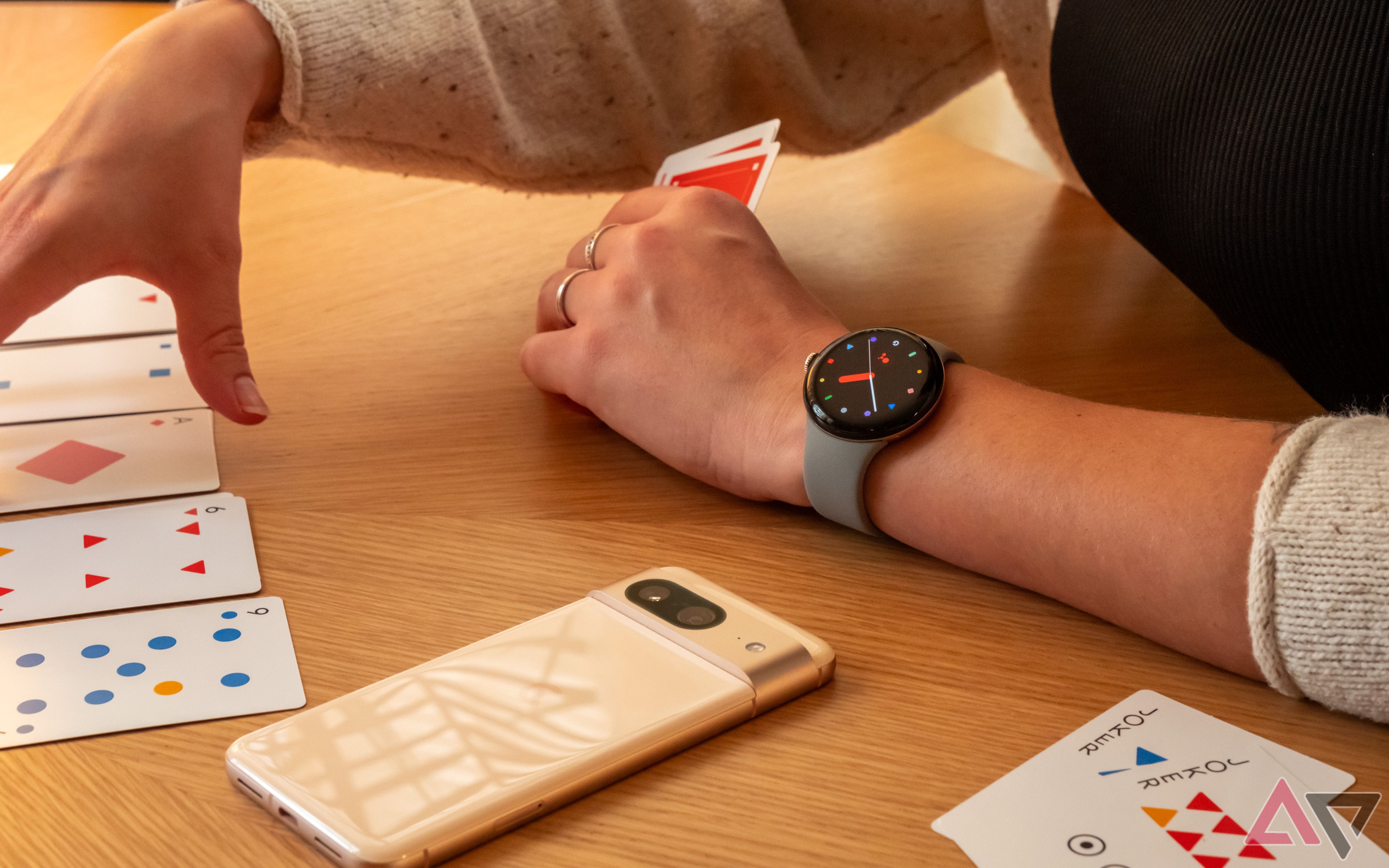
Google Pixel Watch 2 review: The watch we wanted last year
Reliable battery life and improved fitness tracking, wrapped up in a near-identical package
To get the most out of Fitbit, however, you’ll need a Fitbit Premium subscription because various scores related to stress, activity, and sleep are all hidden behind that paywall. On the other hand, you can at least expect the Pixel Watch 2 to last longer per charge at up to 36 hours compared to barely 24 hours before.
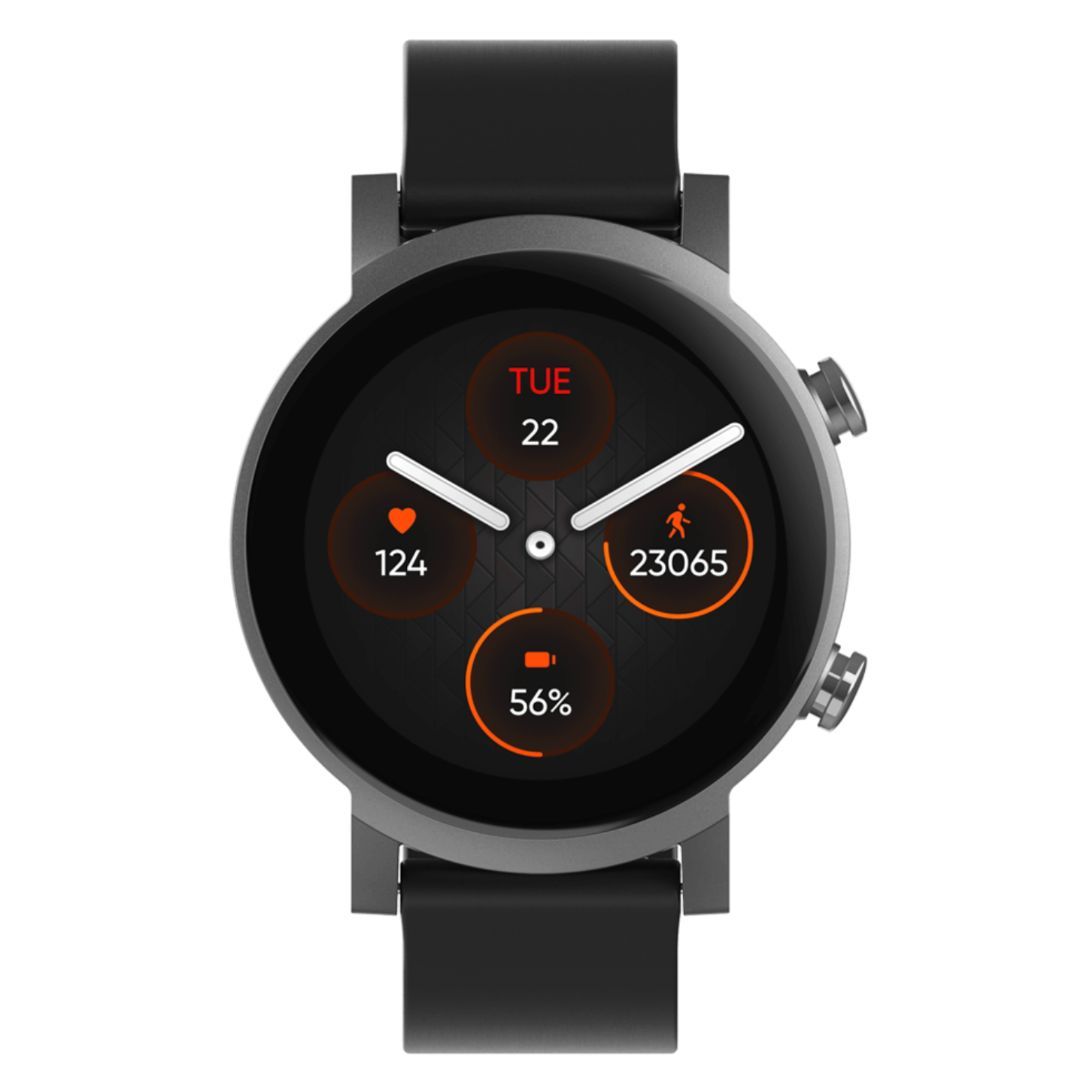
Mobvoi TicWatch E3
Wear OS 3 gives it new life
Mobvoi’s TicWatch E3 turns up a notch because of an upgrade to Wear OS 3, making this smartwatch an interesting option for budget-conscious wearers. It may not have all the bells and whistles, but the software upgrade gives you more to work with.
- Wear OS 3 upgrades make a difference
- Solid app and software support
- Good battery life
- Aging hardware
- Nothing extravagant here
- Switching phones requires a reset
The Mobvoi TicWatch E3 has gone through something of a Wear OS journey considering it took two years to upgrade to Wear OS 3. Could it get to Wear OS 4? Maybe not, but that doesn’t mean there’s no value to gain while wearing it if you’re on a tighter budget.
The update addressed a number of pervasive issues with performance and navigating the interface. While it also adds Google Maps and Wallet, it removes Google Assistant, so your only voice assistant option is to sideload Amazon Alexa instead. Why Mobvoi chose this method of doing things may have something to do with how its own co-processor works with the Snapdragon Wear 4100 chipset. The company doesn’t make it clear, either way.
What Mobvoi does claim is improved health and fitness tracking because of the big software update, including for automatic exercise tracking that kicks in for certain exercises. That’s a good thing because Mobvoi’s exercise apps are pretty extensive, and it’s not hard to install third-party apps that work with Wear OS on top of that. The upgrade to Wear OS 3 smooths out that process considerably, finally putting this device onto a more intuitive path for every user.
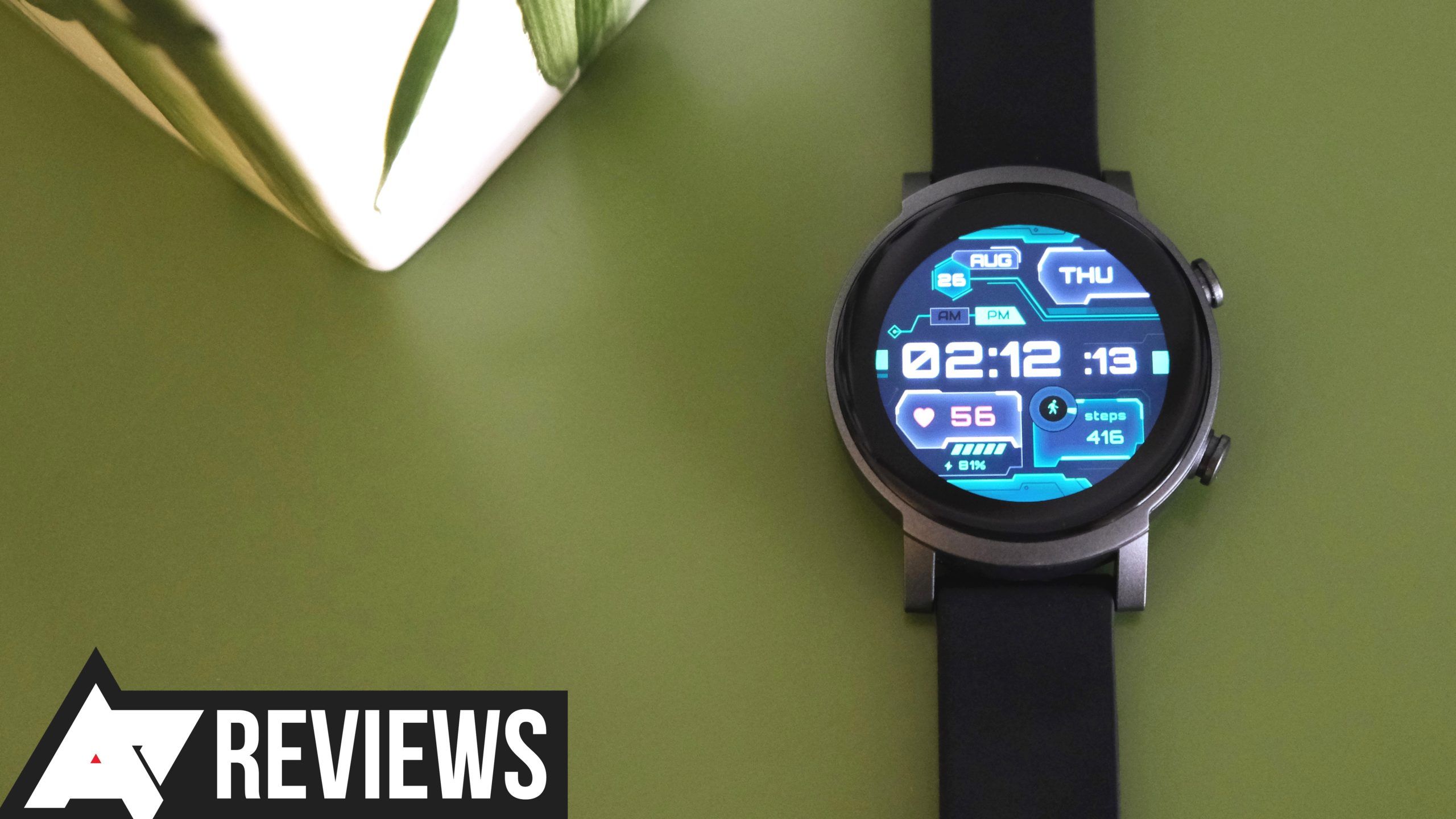
Mobvoi TicWatch E3 review: All dressed up with nowhere to go
An artificially long wait for Wear OS 3.0 could be a hindrance
Battery life is a strong suit for the TicWatch E3, and after subsequent tweaks following the big update, it can last up to two days per charge with the always-on display and constant GPS tracking. Leave them off, and you’re hitting up to five days.
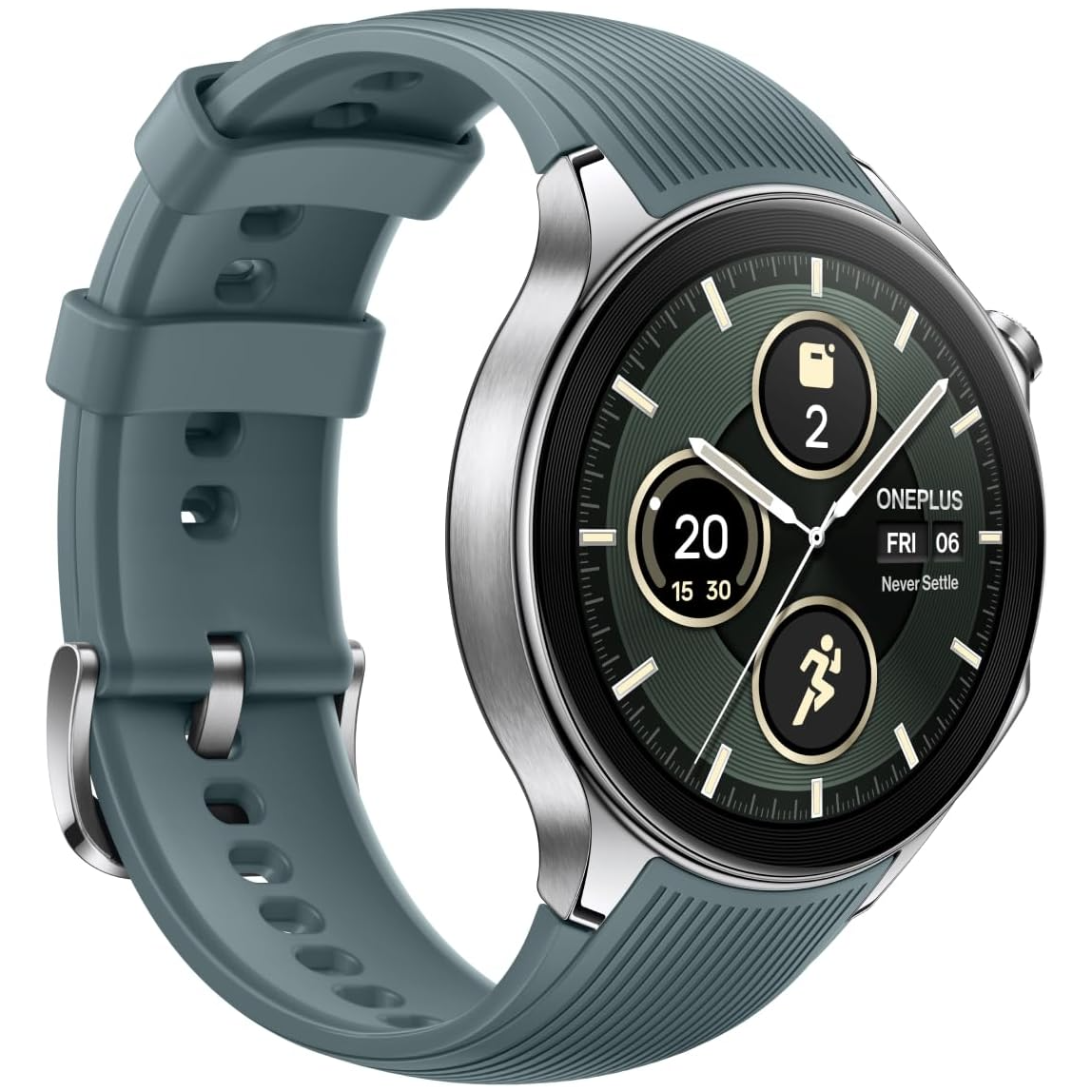
OnePlus Watch 2
Last longer and charge faster
The OnePlus Watch 2 is a sequel but it’s also a first because it’s the first OnePlus wearable to run Wear OS. It has its own overlay giving it a different look and some challenges to work out, though no other Wear OS smartwatch can match this one on battery life right now.
- Longer battery life
- Great design
- OnePlus phone not required
- Crown rotates yet does nothing
- Software still needs work
This smartwatch marks a return for OnePlus in two respects. On the one hand, it’s the company’s first wearable in a few years, and on the other, the OnePlus Watch 2 is the first to run Wear OS. It sports an interesting mix that puts together Wear OS 4 with RTOS (Real Time Operating System), a low-power system tasked with handling background processes related to monitoring health sensors and maintaining the connection with the paired phone — thus leaving Wear OS to deal with all the major functions and third-party apps.
It’s a slick watch in spite of its larger 47mm size, complete with a vibrant and responsive AMOLED display. Strangely, though, OnePlus adds a digital crown that does nothing when you rotate it — not even scrolling menus within the Wear OS interface. Software and health tracking experiences are readily available, yet could use some improvement through software updates, so it remains to be seen how the Watch 2 fares if those improvements are forthcoming.
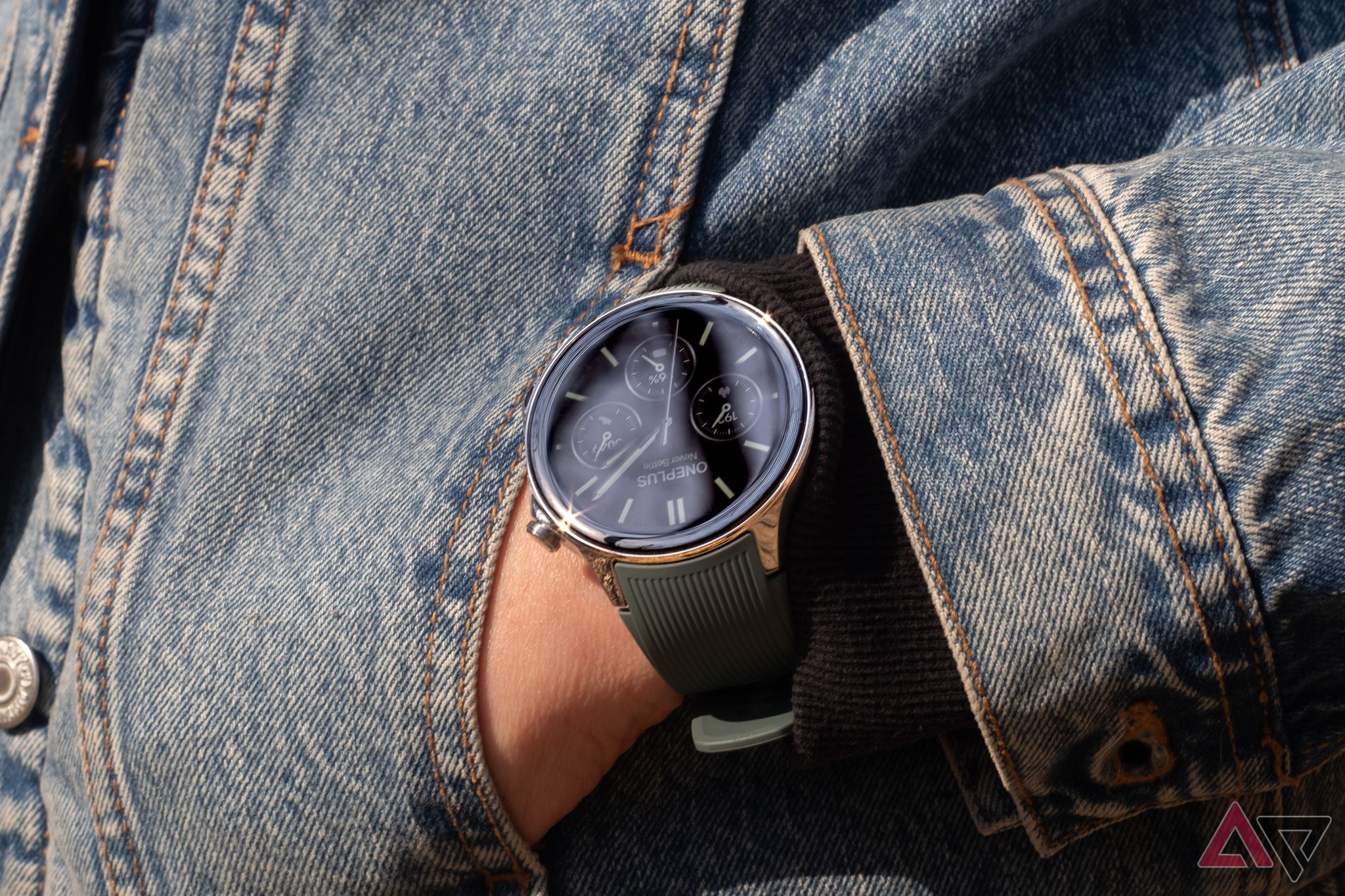
OnePlus Watch 2 review: Worth it for the battery alone
With two chipsets and two operating systems, the OnePlus Watch 2 offers revelatory battery life — but not much more
Unlike Samsung and Google, OnePlus doesn’t offer an LTE variant for the Watch 2, so you’ll need your phone for data connections. Where OnePlus beats them both is in battery life, as the Watch 2 easily outlasts any Galaxy or Pixel Watch with four days of battery life. Even with lots of GPS and screen use, this watch can hit 48 hours easily.
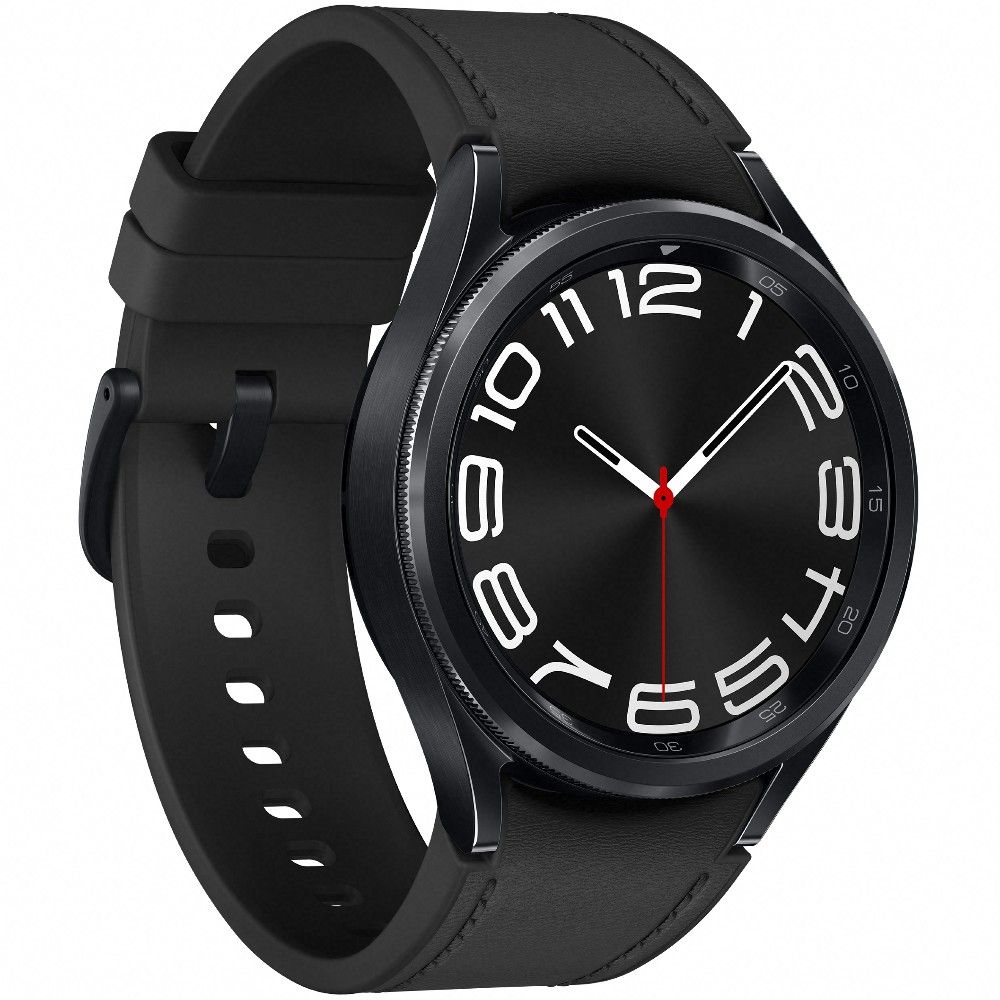
Samsung Galaxy Watch 6 Classic
Wear OS in a Classic design
The Samsung Galaxy 6 Classic version comes in bigger sizes than the regular Galaxy 6, and brings back the physical rotating bezel to navigate Wear OS with precision. There’s plenty more to use within the platform coupled with Samsung’s own feature set.
- Gorgeous display
- Rotating bezel is like nothing else
- Great health and fitness tracking features
- Limited improvement from previous gen
- The bezel comes at price premium
The Galaxy Watch 6 Classic is as close as Samsung gets to building a wearable that mixes the tech of a smartwatch with a design resembling a more traditional timepiece. It also brings back the physical rotating bezel that was a consistent staple for the company until its omission in the Galaxy Watch 5 series. While this does strongly resemble the Galaxy Watch 4 Classic, it comes in two bigger sizes: 43mm and 47mm.
It’s also a model of what Wear OS is capable of, primarily because the screen gets super bright to see in all conditions, and Samsung’s One UI 5 overlay continues to blend in with the wider Wear OS 4 interface. Samsung adds its own flavor to getting around on its smartwatches, doing so without limiting access to the features that should matter. That includes tracking health and fitness metrics like exercise, activity, sleep, blood oxygen (SpO2), and skin temperature — the latter being a first on a Classic wearable. There’s limited automatic exercise tracking and the option to get some sleep coaching in Samsung Health as well.

Samsung Galaxy Watch 6 Classic review: Iteration with a twist
Mostly minor improvements from the Watch 5, but a fan-favorite feature returns
You can still access Google Assistant (or Bixby, if you prefer), Wallet, Maps, and Calendar, plus take and make phone calls. Not to mention the LTE variant. Battery life holds up fairly well with two days a good possibility with the always-on display for the 47mm, which has the larger power capacity. The 43mm version won’t make it that far, meaning you would have to charge that back up more often.
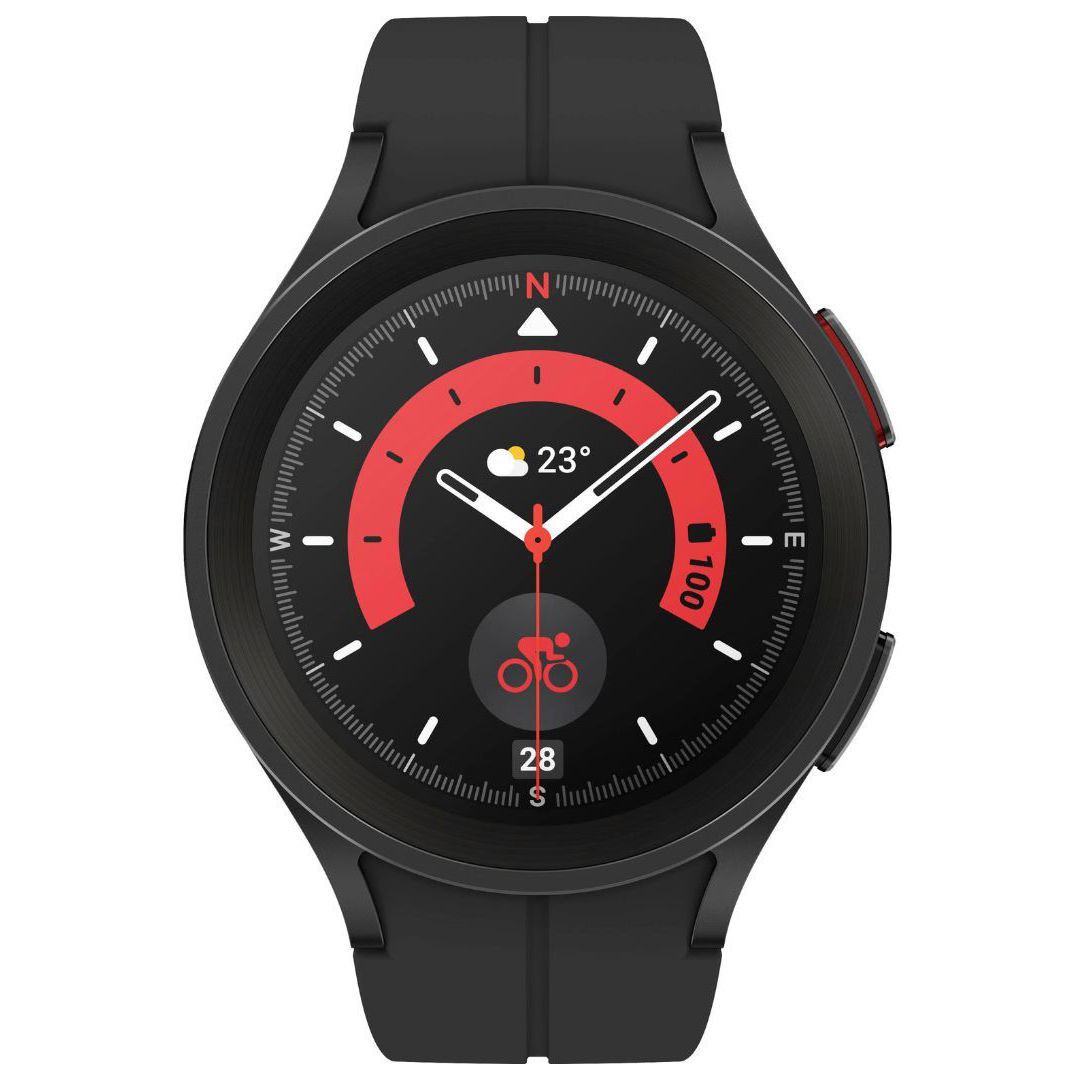
Samsung Galaxy Watch 5 Pro
The toughest Wear OS has to offer
The Galaxy Watch 5 Pro is Samsung’s most ruggedized smartwatch to date, and the toughest build of any Wear OS model as well. It has plenty to offer on the software side on top of that, making it a unique option compared to others running the same platform.
- Sapphire glass screen and titanium body
- Samsung health and fitness tracking features
- Lasts longer than other Samsung watches
- No rotating bezel
- GPX maps only support hiking and cycling
The Samsung Galaxy Watch 5 Pro is unique, even among Samsung smartwatches, for the simple fact it has a titanium body and rugged build unlike any other in the lineup. It only comes in one 45mm size and is LTE-ready out of the box once you get it on a data plan, adding to its increased focus on the outdoors. It’s still currently the only Wear OS watch with the ability to load GPX files for custom navigation off the beaten path, though it’s still limited only to hiking and cycling. Owing to its tougher design, it doesn’t have moving parts on the outside like the rotating bezel of the Classic line.
It could use a more clever design for the band, though, but thankfully, you can always swap it out for another, as third-party options abound for Samsung’s tough smartwatch. From a software perspective, Wear OS 4 works with Samsung’s One UI 5 in much the same way it does on the Galaxy Watch 6 models, save for the exclusive features like GPX files. That means you can track all your activity via the exercise app on the watch, syncing data with Samsung Health. Blood oxygen (SpO2) and skin temperature sensors do their thing as well.
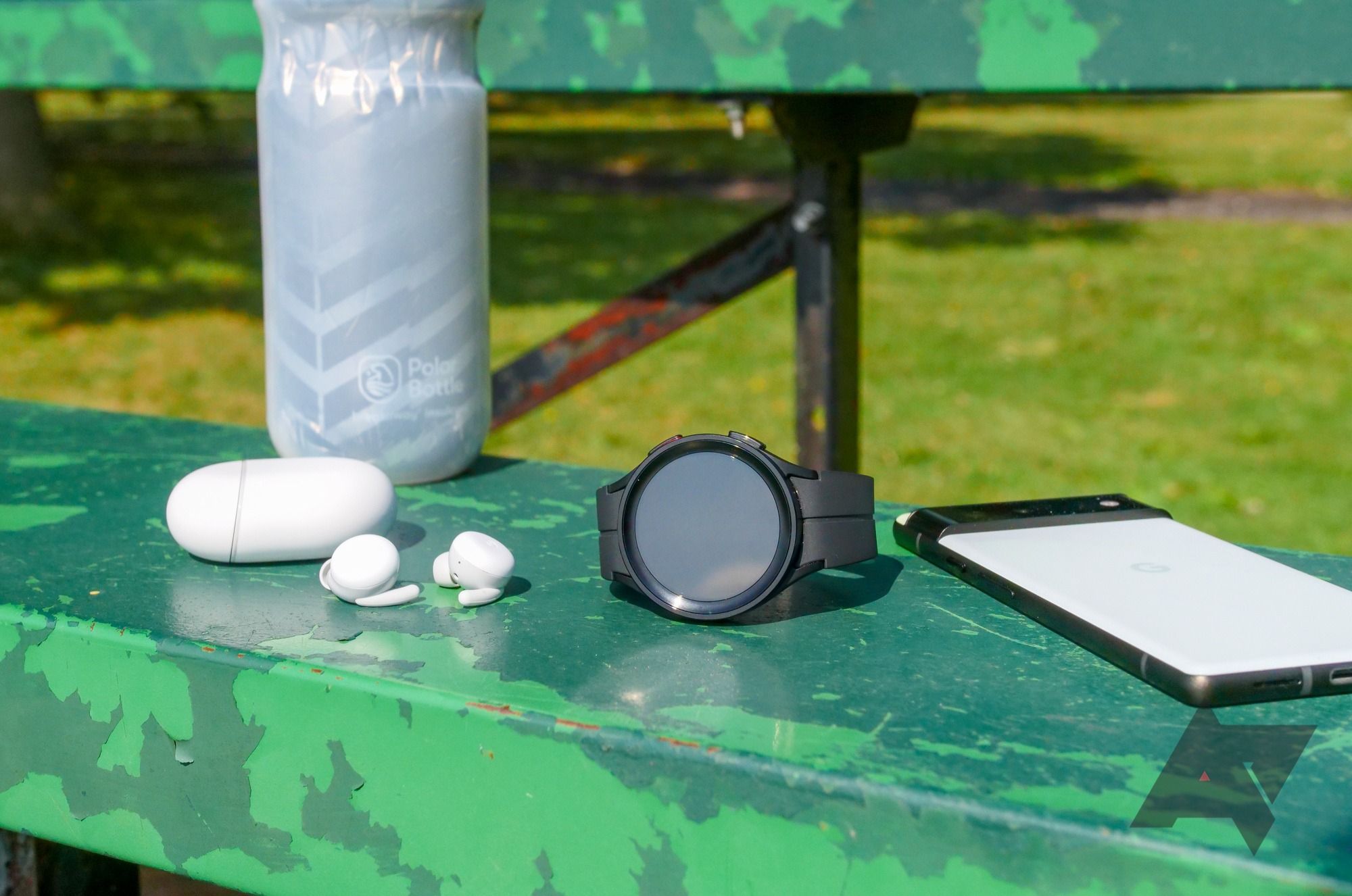
Samsung Galaxy Watch 5 Pro review: All-star battery, minor league fitness tracker
Maybe this pro should have stayed an amateur
All of this works with the goods that come from Wear OS 4, including Google features, like Maps, Wallet, Calendar, and Assistant. Given its larger size, the Galaxy Watch 5 Pro packs one of the largest batteries on any Wear OS watch to date. While Samsung claims up to 80 hours per charge, you’re more likely to get less than that, especially if you make use of GPS tracking outdoors on a regular basis.
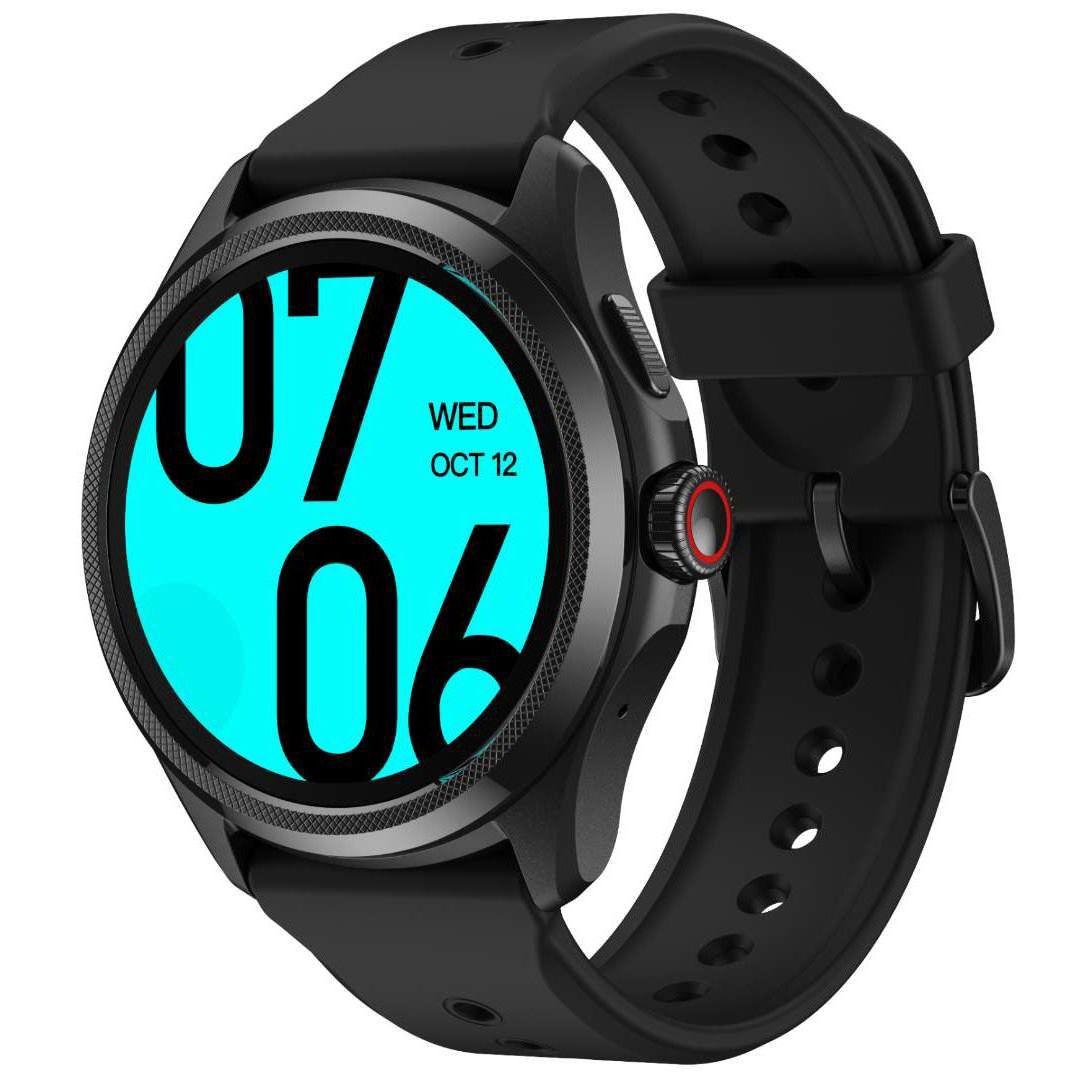
Mobvoi TicWatch Pro 5
A cogent dual-display
The Mobvoi TicWatch Pro 5 is a versatile smartwatch featuring a unique dual-layer display that helps split up Wear OS and save on battery life at the same time. It’s not on Wear OS 4, but that could happen with a software update.
- Neat dual-layer display
- Fast performance
- Excellent battery life
- No Wear OS 4 – yet
- Still no Google Assistant
If the TicWatch E3 is Mobvoi’s budget option, the TicWatch Pro 5 is the more premium one. It’s up against stiff competition in the Wear OS space as evidenced by this list, but there are reasons to consider the Pro 5 over others. For starters, it has a proprietary dual-layer display that brings together a low-power LCD panel and primary OLED display to improve battery life. The LCD shows the time and date, step count, heart rate, and other basics, while the OLED shows everything from Wear OS.
The TicWatch Pro 5 runs on Wear OS 3.5, so it’s not quite at the same level as others on the software side, but the discrepancy doesn’t cripple the device. Many of the improvements related to battery life aren’t as applicable here because Mobvoi already found a way to extend life per charge further with the dual-layer display. Health and fitness tracking is also largely the same, so you don’t sacrifice much in that regard beyond the aesthetic differences compared to the likes of a Galaxy or Pixel Watch
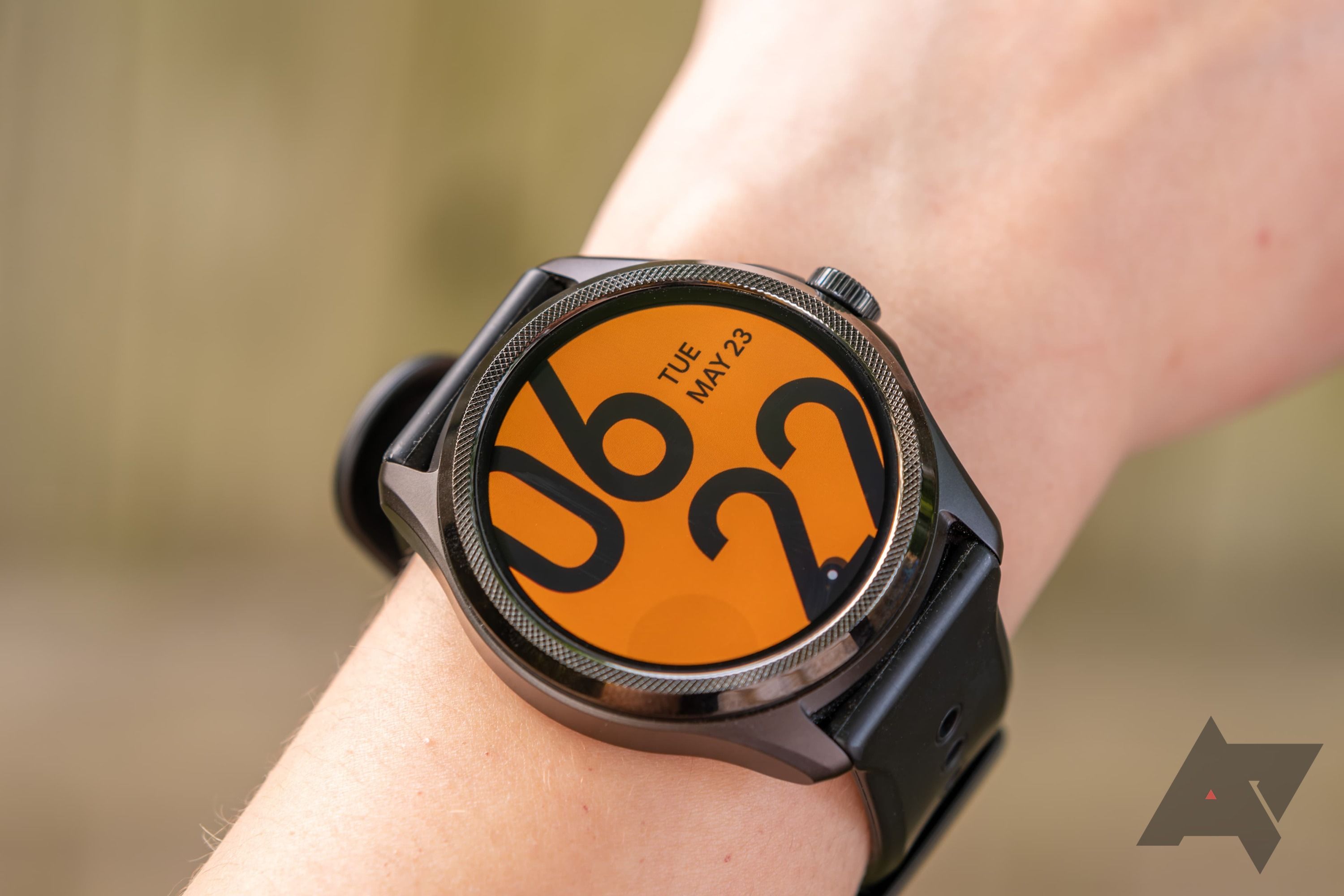
Mobvoi TicWatch Pro 5 review: Battery bliss
The TicWatch Pro 5 offers great performance and battery life, but it’s not without its flaws
At the same time, missing out on Wear OS 4 means you have to reset the TicWatch Pro 5 when switching phones. Plus, Google Assistant is missing in action after Mobvoi muzzled it in the Wear OS 3.5 upgrade, with no word on when or if it will come back.
Wear OS is getting better with each release
It’s taken some time for Google to get its act together and make Wear OS the viable wearable platform it’s developing into in front of our very eyes. None of that could’ve happened without Samsung adopting it and collaborating with Google to make it more robust and effect a more consistent upgrade cycle. For that, and other reasons, the Samsung Galaxy Watch 6 is the best Wear OS smartwatch right now because it exemplifies that very cooperation. It proves, yet again, that Wear OS and One UI can work together with few compromises.
If you want something that feels more “stock”, then the Google Pixel Watch 2 is an easy choice. Google hardware and software? It’s not unlike getting a Pixel phone because Google owns Android. To be fair, Google doesn’t hog features for itself, so the Pixel Watch 2 can also work really well with other Android phones, except for the fact you don’t need the Pixel Watch app on a Pixel phone because everything is in the phone’s settings.
From a budget perspective, Wear OS watches generally come at a premium, but if your needs are simple enough, then the Mobvoi TicWatch E3 may be your best (and cheapest) bet. It languishes with Wear OS 3, but that’s an improvement over what it was previously running.

Samsung Galaxy Watch 6
Bringing it
The Samsung Galaxy Watch 6 offers two software packages in one, melding together Wear OS with its own One UI overlay to create a dynamic software experience. It may not look the same as the Classic or be as rugged as the Watch 5 Pro, but it’s great value for what it can do.




